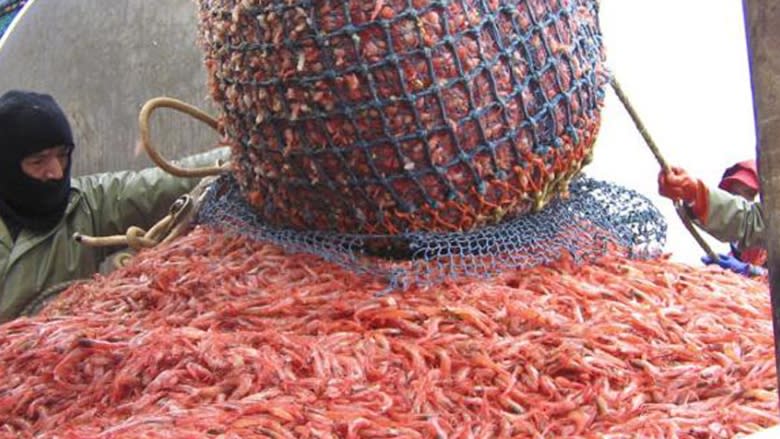Atlantic Canada's seafood industry gets a boost as China lowers tariffs
Atlantic Canada's seafood industry is starting 2017 with a boost for the bottom line thanks to lower tariffs on seafood entering the booming China market.
The Jan. 1, 2017, tariff cuts announced just before New Year's Day by China's ministry of commerce will benefit about a quarter of Canada's seafood exports to China. The exports to China were valued at $634 million as of October 2016.
Global Affairs Canada told CBC News crab, frozen halibut and albacore are among the export products most benefiting from the tariff reductions.
Tariffs on these products will be reduced on average from 11 to five per cent, leaving more money in the pockets of seafood companies in 2017.
Top exporter in Canada
The tariff on northern shrimp — Pandalus borealis — is also being reduced from five per cent to two per cent.
Nova Scotia exports more seafood than any other province. As of October 2016, it had already exported $218 million worth to China, putting it on track for another record year.
For the provincial government, the tariff cut is more good news for a buoyant sector of the economy.
"We've seen significant annual export growth since putting an emphasis on marketing to Asia. China is looking for high-quality products and Nova Scotia is looking forward to continuing to provide that," said Krista Higdon, a spokeswoman for the Nova Scotia Department of Fisheries and Aquaculture.
Europe tariffs could be lowered
The Chinese appetite for Nova Scotia seafood is being felt across the province — from direct investment in processing facilities to a new $5 million cargo pad at Stanfield International Airport to accommodate the new cargo planes flying lobster by the tonne out of Halifax.
Seafood companies have their eye on potentially more important tariff cuts in another part of the world: Europe.
The proposed EU-Canada free trade deal would permanently eliminate almost all tariffs on seafood going into Europe which, for Nova Scotia, remains a bigger market than China.
Upon ratification, the Comprehensive Economic and Trade Agreement (CETA) would immediately eliminate tariffs on the following:
- Live lobster, which now sits at eight per cent.
- Live and frozen scallops, also eight per cent.
- Frozen shrimp, currently 12 per cent.
- Salt cod, now 13 per cent.
- Frozen and fresh crab, now 7.5 per cent.
Under CETA, all seafood tariffs would be phased out in seven years.

 Yahoo Finance
Yahoo Finance 

